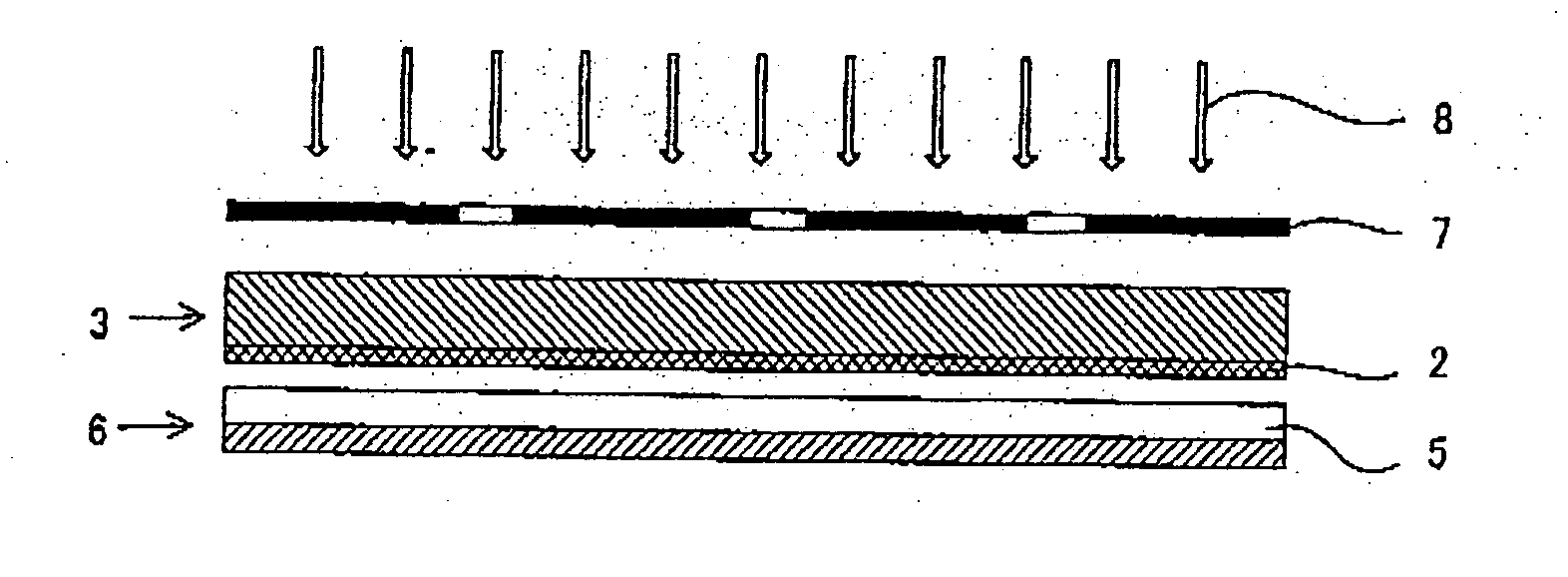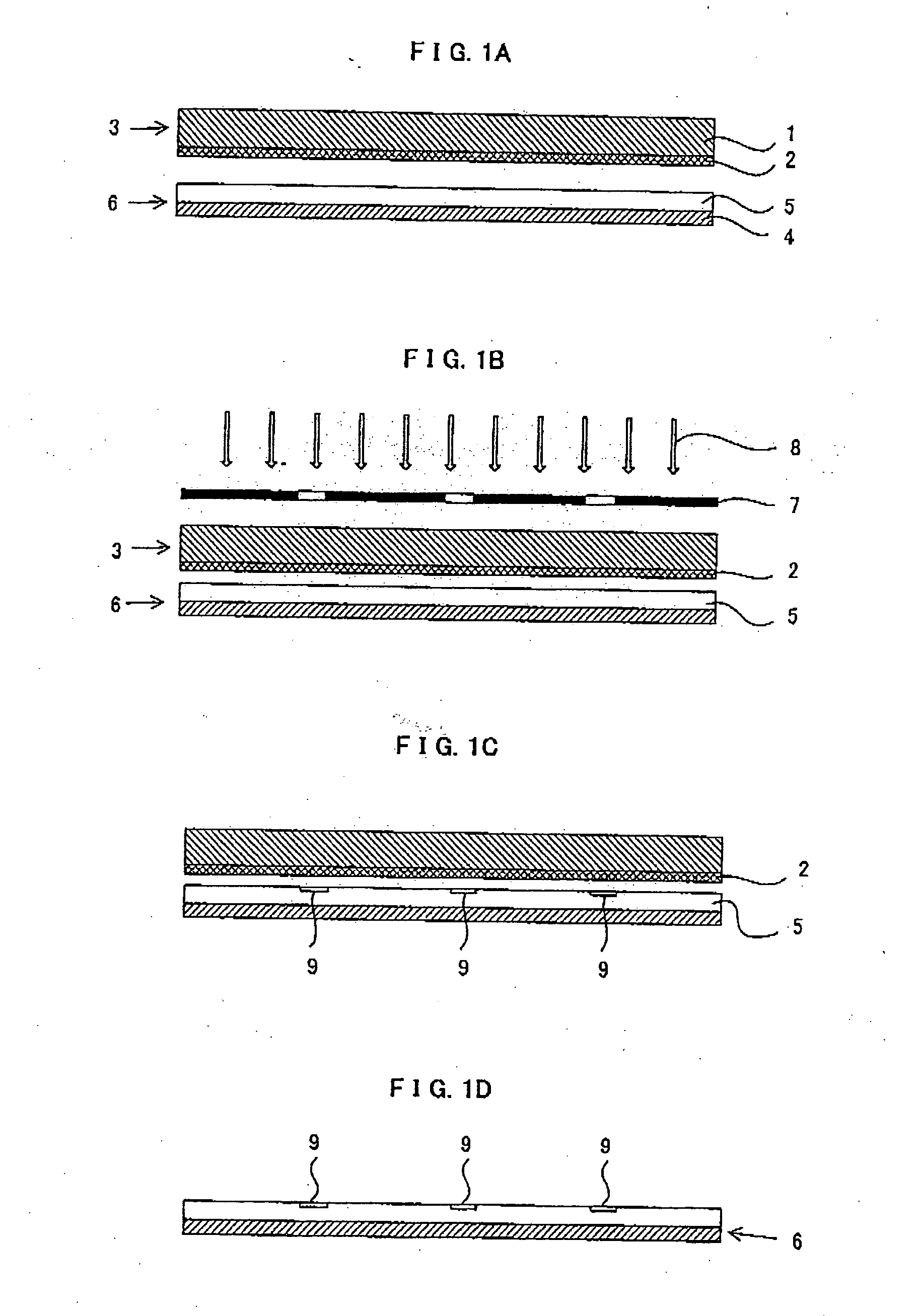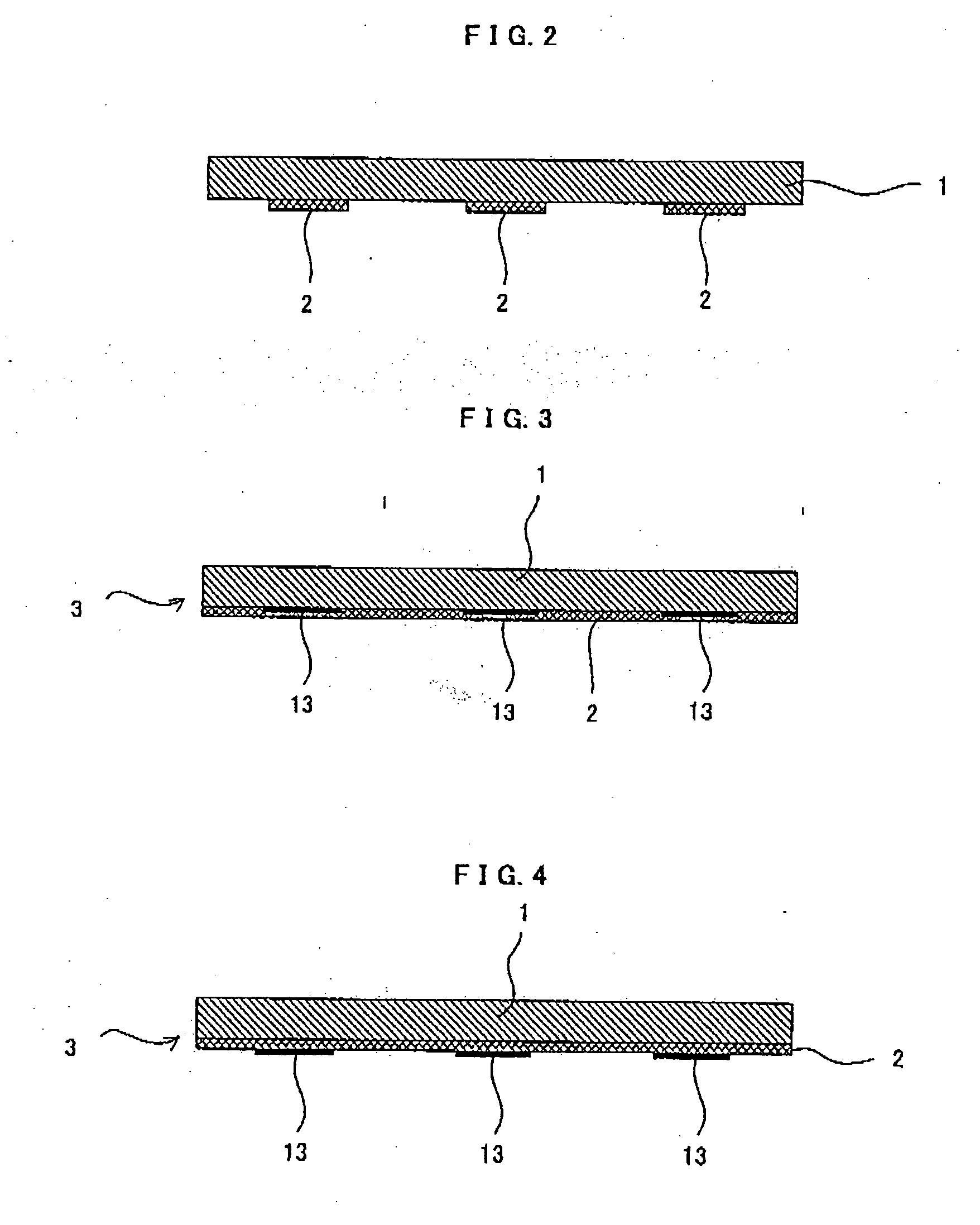Method of producing pattern-formed structure and photomask used in the same
- Summary
- Abstract
- Description
- Claims
- Application Information
AI Technical Summary
Benefits of technology
Problems solved by technology
Method used
Image
Examples
third embodiment
In the above-mentioned description, two cases i.e., the case in which the light-shielding portion is provided between the base material and the photocatalyst-containing layer and the case in which the light-shielding portion is provided on the photocatalyst-containing layer, have been explained regarding the position at which the light-shielding portion is formed. However, another embodiment, in which the light-shielding portion is provided on the surface of the base material at which the photocatalyst-containing layer has not been formed, can also be employed. In this third embodiment, for example, a photomask may be closely but removably attached to the surface. This structure can be preferably employed when the pattern-formed structure is modified in a small lot.
(Primer Layer)
In the present invention, in the case in which the photocatalyst-containing-layer side substrate includes a base material, a light-shielding portion formed in a pattern-like configuration on the base mate...
first embodiment
A photomask of the first embodiment includes a transparent base material, a light-shielding portion pattern having thickness of 0.2 to 10 μm and formed, in a pattern-like configuration, on the transparent base material, and a photocatalyst-containing layer formed on the transparent base material and the light-shielding portion pattern. A specific example thereof is shown in FIG. 3.
In short, in the method of producing a pattern-formed structure of the present invention, the photocatalyst-containing-layer side substrate which includes the light-shielding portion can be used as a photomask, due to the functional feature thereof.
second embodiment
A photomask of the second embodiment includes a transparent base material, a photocatalyst-containing layer formed on the transparent base material, and a light-shielding portion pattern having thickness of 0.2 to 10 μm and formed, in a pattern-like configuration, on a photocatalyst-containing layer. A specific example thereof is shown in FIG. 4.
A photomask of the third embodiment includes a transparent base material, a light-shielding portion formed, in a pattern-like configuration, on the transparent base material, a primer layer formed on the transparent base material and the light-shielding portion, and the photocatalyst-containing layer formed on the primer layer. A specific example thereof is shown in FIG. 5.
As each element of any of the above-mentioned photomasks is basically the same as that described in the aforementioned “the method of forming a pattern-formed structure” and the effects achieved by the photomasks of the respective embodiments are basically the same as t...
PUM
 Login to View More
Login to View More Abstract
Description
Claims
Application Information
 Login to View More
Login to View More - R&D
- Intellectual Property
- Life Sciences
- Materials
- Tech Scout
- Unparalleled Data Quality
- Higher Quality Content
- 60% Fewer Hallucinations
Browse by: Latest US Patents, China's latest patents, Technical Efficacy Thesaurus, Application Domain, Technology Topic, Popular Technical Reports.
© 2025 PatSnap. All rights reserved.Legal|Privacy policy|Modern Slavery Act Transparency Statement|Sitemap|About US| Contact US: help@patsnap.com



